Anyone exploring Tokyo should check out Shinjuku, a lively area in the city. Shinjuku is where you find the real buzz of city life with its skyscrapers, bright lights, and busy streets that tell the tale of Tokyo’s rapid modernization. It’s renowned for its packed train station, the world’s busiest, serving as a gateway to various adventures within the city.
In this guide, I share the top things to do in Shinjuku, from discovering traditional hidden izakayas and engaging in cool shopping adventures to savoring street food delicacies and exploring iconic attractions.
Even though Shinjuku is huge (it’s actually called Shinjuku city), don’t worry, as most of the places mentioned in this article are easily accessible on foot.
Table of Contents
- Stroll in Shinjuku Gyoen National Garden
- Grab a drink in Golden Gai
- See panoramic views from the Tokyo Metropolitan Government Building
- Eat yakitori in Omoide Yokocho
- Go Karting on the streets of Shinjuku
- Explore the Samurai Museum
- Photograph the neon lights in Kabukicho
- Go on a food tour with locals
- Say hi to Godzilla
- Explore the Shinjuku Ni-chōme
- See the cocoon building in Nishishinjuku
- Visit the New York Bar in Park Hyatt
- See dots and pumpkins at the YAYOI KUSAMA Museum
- Go into Omoide Nukemichi
- Pay your respects at Hanazono Jinja Shrine
- Hunt for food deals in depachika
- Admire the Shinjuku skyline from Shinjuku Southern Terrace
- Experience the world’s busiest train station
- Hunt for bargains in Don Quijote discount store
- Go shopping in world-class department stores
- Stay in Shinjuku capsule hotel
- See unique architecture
- More travel tips for Tokyo
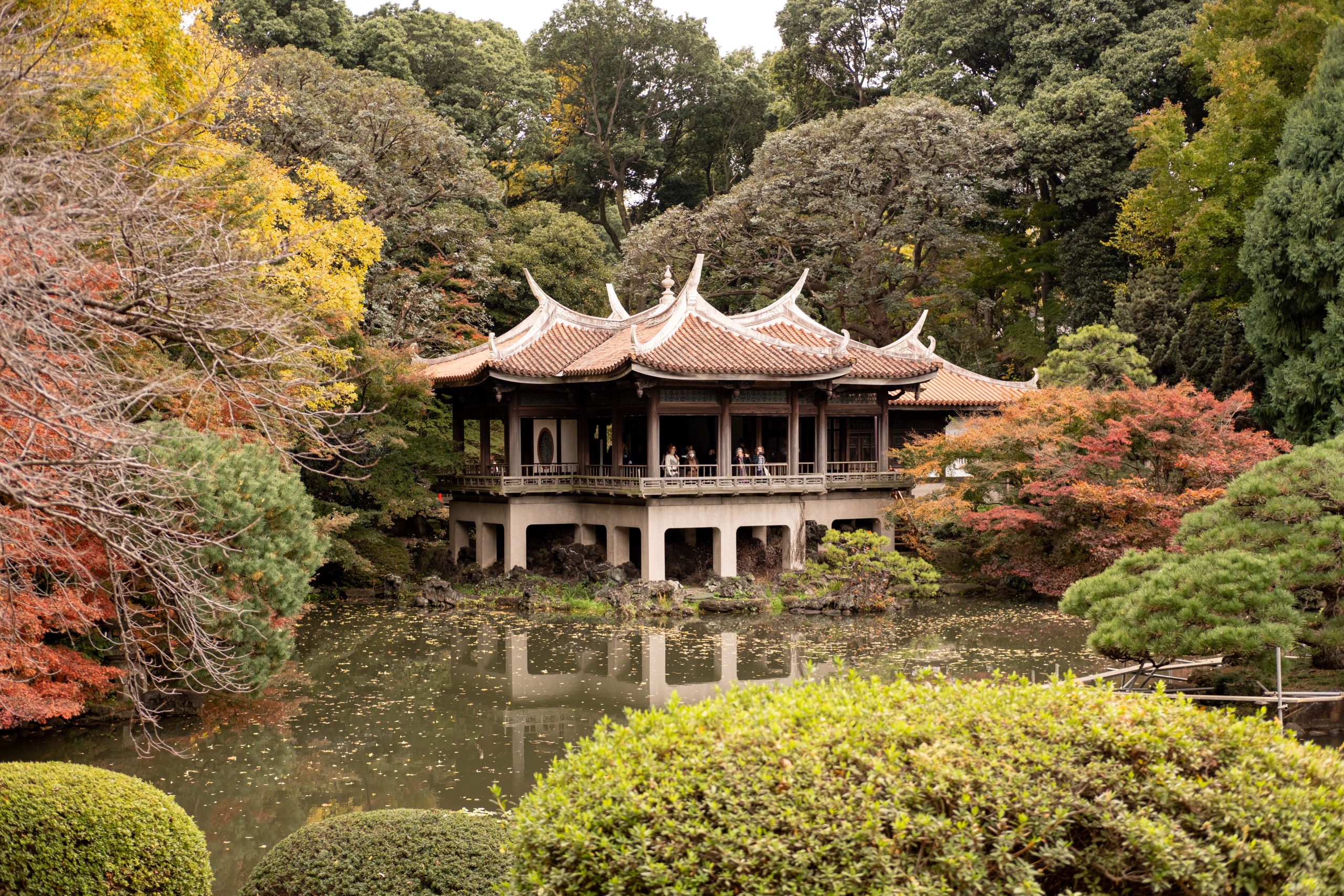
Stroll in Shinjuku Gyoen National Garden
Hours: 9am-4pm (Closed Mondays)
Admission: 500 yen
Shinjuku Gyoen National Garden is a quiet spot in Tokyo, perfect for escaping the city noise. It’s widely known for its cherry blossoms with over 400 trees, and it’s beautiful in both spring and autumn. The park features an old Japanese garden with ponds and pavilions, dating back to the Edo Period, as well as a French and an English garden.
Don’t miss the Shinjuku Gyo-en Greenhouse inside the garden, which has over 1700 tropical plants and takes about 30 minutes to explore. Entry to the greenhouse is included in your admission fee, and you’ll see unique plants like venus fly traps.
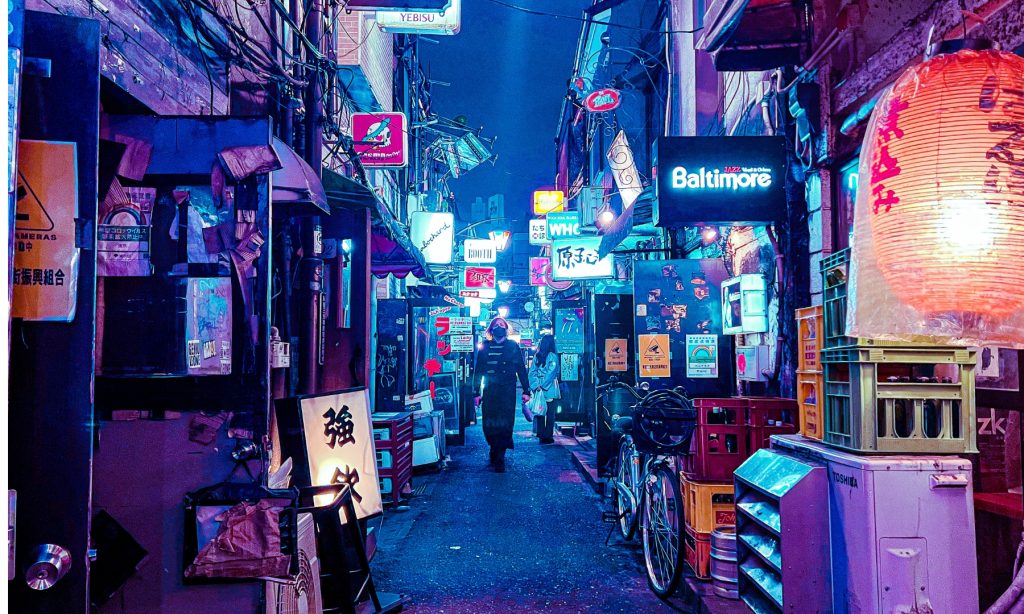
Grab a drink in Golden Gai
Hours: 5pm ~ late
Admission: each bar has its own cover charge
Golden Gai in Shinjuku is a popular area with narrow alleys and about 200 small bars tightly packed in 6 parallel streets. It’s in the Kabukicho district and offers a cozy spot for drinks with locals or other visitors. Bars here are tiny, creating an intimate vibe, and many welcome foreigners.
Though a bit pricier, the unique Japanese izakayas and maze-like alleys are worth it. Each bar in Golden Gai has its own theme, offering everything from craft beers to live music. The area has a Bohemian feel, rooted in its post-WWII history as an artists’ hub.
For foreigner-friendly bars, try places like Bar Darling or Albatross. Most bars have a cover charge, so make sure you have some cash ready for this.
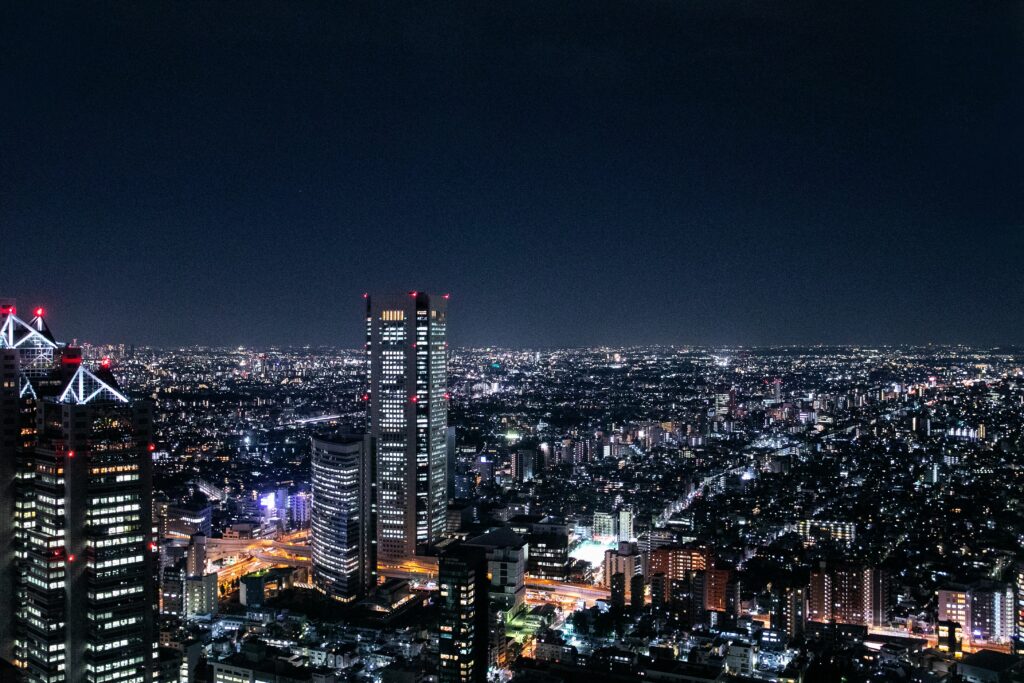
See panoramic views from the Tokyo Metropolitan Government Building
Hours: 9:30am – 10pm
Admission: Free
The Tokyo Metropolitan Government Building in Shinjuku is a prime spot for incredible views of Tokyo. This skyscraper has observation decks on the 45th floor of both towers, where you can see the city from above for free. You can spot landmarks like Tokyo Tower and Skytree, and on clear days, even Mount Fuji.
The view of Tokyo’s vast, neatly organized urban area is especially stunning at sunset or night.
The decks are open every day from 9:30am to 10pm, with the last entry at 9:30pm. Remember, the north deck closes on the 2nd and 4th Monday, and the south deck on the 1st and 3rd Tuesday of each month.

Eat yakitori in Omoide Yokocho
Hours: 5pm ~ late
Admission: each restaurant has its own cover charge
Omoide Yokocho, or Memory Lane, is a cozy alley network in Shinjuku super famous for its yakitori (grilled chicken skewers) eateries. Originating as a post-WWII black market area, it was rebuilt after a 1999 fire and is now a key tourist spot.
Almost every restaurant has minimal seating areas, allowing just a handful of customers at a time. Most places accept cash only and have a small cover charge. It’s recommended that you visit it after dark when the eateries open to enjoy the full on experience.
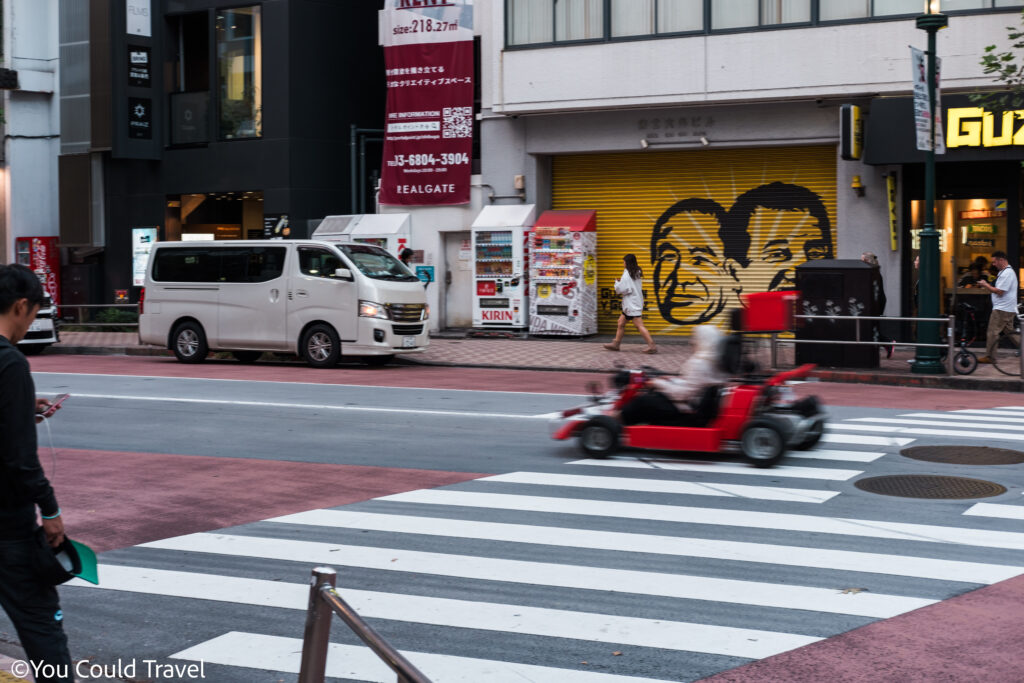
Go Karting on the streets of Shinjuku
Cost: around 15,000 yen
Go-karting on the streets of Shinjuku offers an exhilarating way to explore Tokyo. Imagine zipping through the vibrant cityscape, surrounded by neon lights and iconic landmarks, all while driving a go-kart, dressed in a superhero costume! You can basically enjoy Mario Kart in real life, in Shinjuku, how cool is that?
You do need a valid driving license and an international driving permit with you, so keep that in mind. Needless to say that this is one of the most popular activities, so it tends to sell out well in advance.
Book your Go Kart experience in Shinjuku.

Explore the Samurai Museum
Important: The Samurai Museum is temporarily closed for large scale renovations and due to reopen in 2025.
Check out the Samurai Museum in Shinjuku for a cool trip back in time. You’ll get to see real samurai armor, swords, and other gear and artifacts. The museum tells the story of the samurai, the brave warriors of old Japan.
Te museum also provides educational tours and demonstrations, including sword handling and photo opportunities in samurai armor, making it an interactive experience.
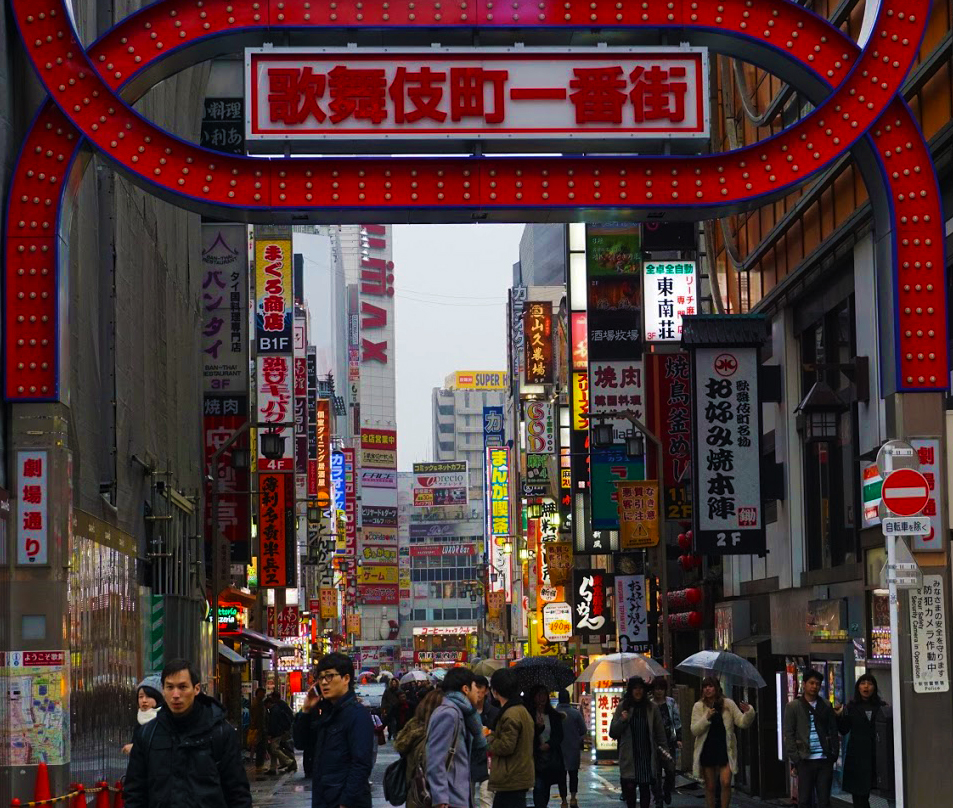
Photograph the neon lights in Kabukicho
Kabukicho is a district known for its vibrant nightlife and busy streets. It is an entertainment hub dubbed as Japan’s largest red-light district and very much alive with neon lights, bars and adult-only establishments.
Kabukicho caters to a diverse bar scene, though some are hostess bars with Yakuza connections, so consider a local guide for the best experience. The area also features love hotels with unique decors, providing a quirky, private getaway.
Karaoke bars are a must-visit here, offering everything from private rooms to interactive stages for singing into the night.
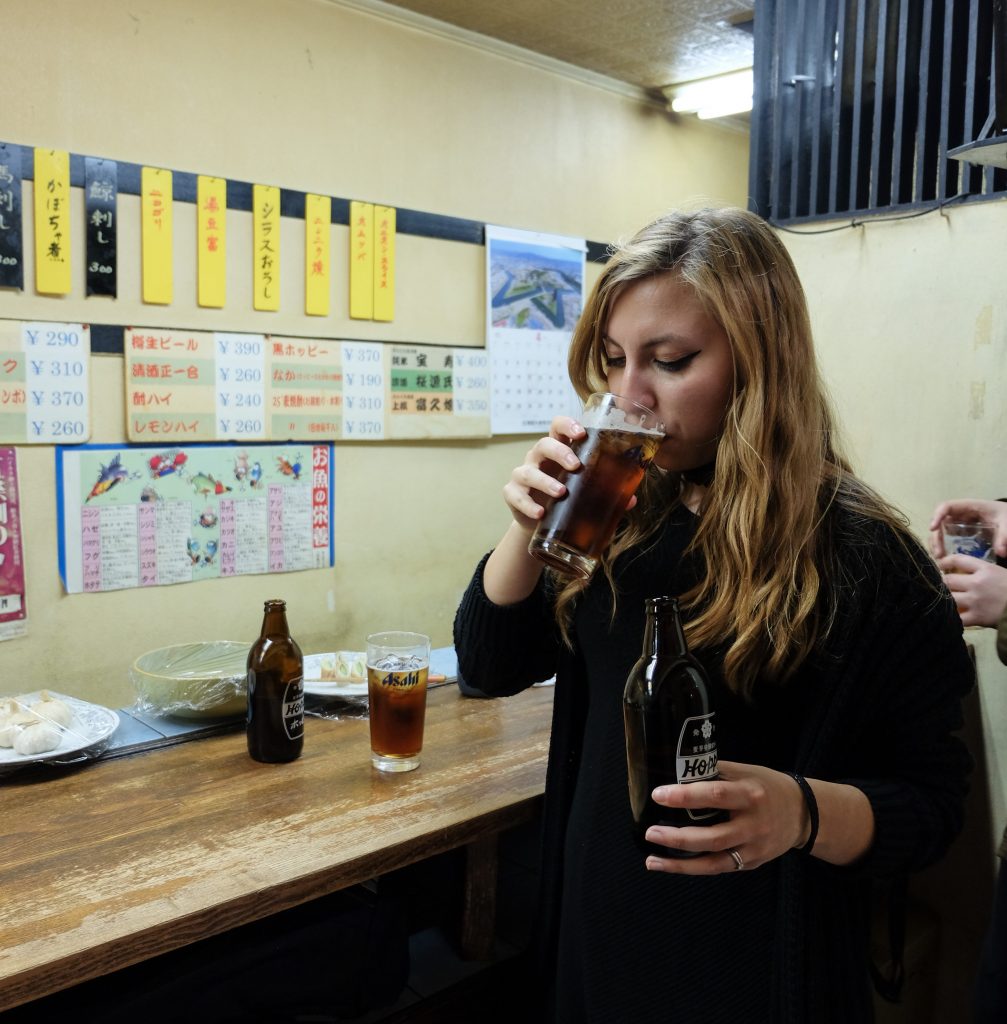
Go on a food tour with locals
Going on a food tour with locals in Shinjuku is a chance to dive deep into Tokyo’s awesome food scene with people who know it best. You’ll try dishes you might not find on your own, in tiny eateries which may otherwise look too intimidating for the uninitiated.
I learned so much about food from my local guide, and tried small plates of sashimi, yakitori and deep-fried veggies as well as a special Tokyo drink called Hoppy.
It’s a great way to get insights into the history and traditions behind the food, making the experience educational as well as delicious. Plus, it’s a great way to meet new people and see the city from a different perspective.
Book your food tour experience in Shinjuku.
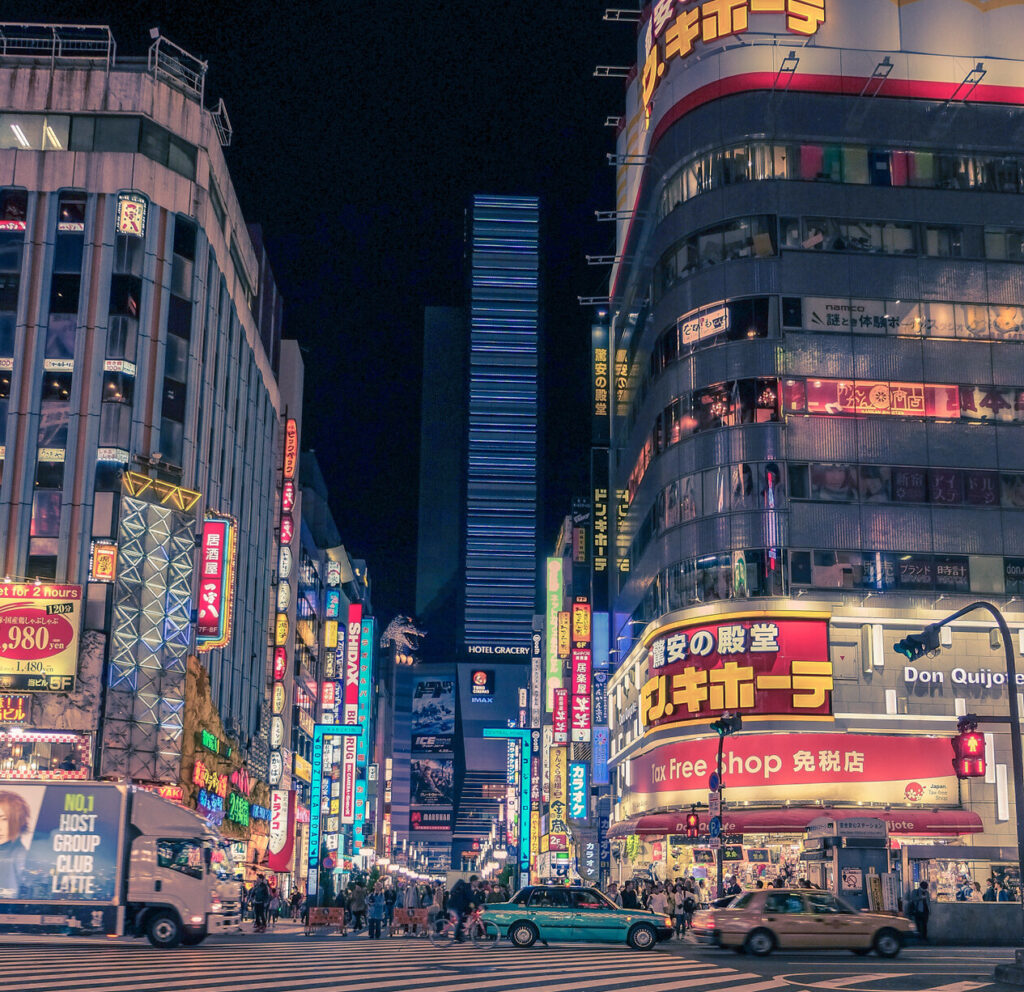
Say hi to Godzilla
The Godzilla Head is a famous landmark in Shinjuku located atop the Toho Cinema building in the Kabukicho district, Central Road. This larger-than-life statue pays homage to Godzilla, Japan’s iconic monster.
The Godzilla Head is positioned at Hotel Gracery Shinjuku and visible from several spots in the area, making for a popular photo opportunity. It’s part of the Toho Cinemas Shinjuku complex, Toho being the film company behind Godzilla.

Explore the Shinjuku Ni-chōme
Shinjuku Ni-chōme is the epicenter of the LGBTQ+ community in the city. Packed with gay-friendly bars and clubs, it’s an inclusive place that welcomes people looking to enjoy a lively night out.
It’s also home to various events and festivals celebrating LGBTQ+ culture throughout the year. It’s easy to reach, just a short walk from Shinjuku Station, making it a convenient stop for anyone exploring the area.

See the cocoon building in Nishishinjuku
The Cocoon Building, officially known as the Mode Gakuen Cocoon Tower, is a striking architectural landmark in Nishishinjuku, which is the skyscraper district in Shinjuku. Standing tall at 204 meters, this 50-story building is hard to miss with its unique, cocoon-shaped design.
It serves as an educational facility, housing three schools: a fashion school, a design and technology school, and a medical welfare school. The building’s innovative design symbolizes nurturing and growth.
Visit the New York Bar in Park Hyatt
The New York Bar in the Park Hyatt Tokyo is an iconic spot that combines breathtaking views of the city with a luxurious atmosphere. The bar gained international fame through its appearance in the film “Lost in Translation.”
New York Bart is renowned for its live jazz music, extensive cocktail menu, and breathtaking views of Tokyo, particularly during the nighttime.
There’s a cover charge in the evening, but the experience of the atmosphere, music, and view make it well worth it.
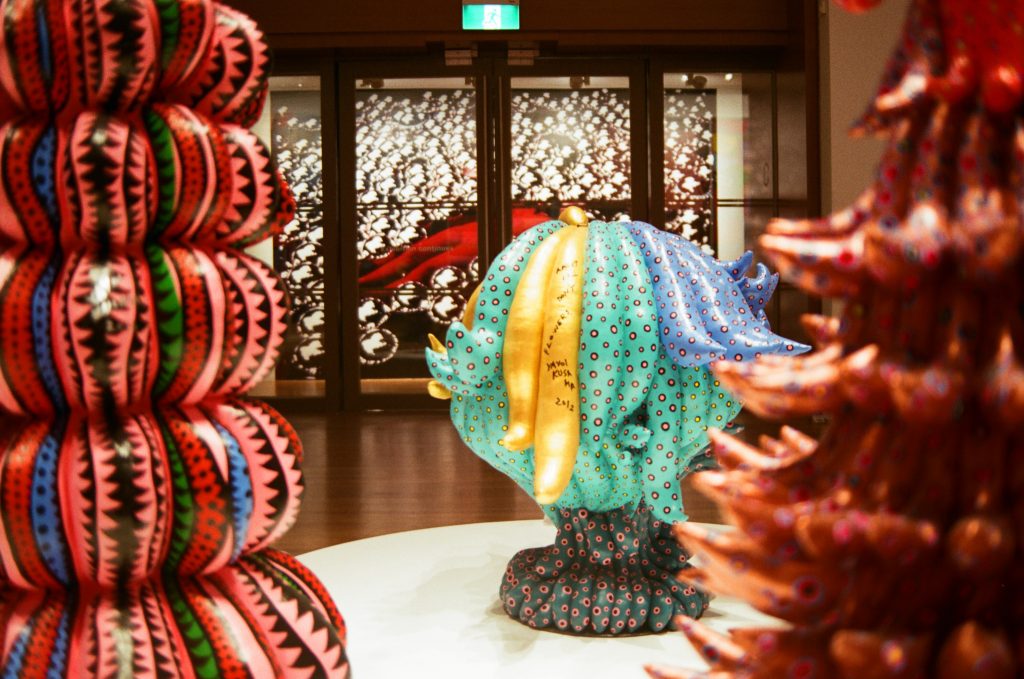
See dots and pumpkins at the YAYOI KUSAMA Museum
The Yayoi Kusama Museum is a fascinating venue dedicated to the works of Yayoi Kusama, one of Japan’s most famous contemporary artists, known for her unique use of dots and pumpkins in her art.
This unique museum, noticeable by its polka-dot exterior, showcases Kusama’s work, including her famous polka dots and infinity mirror installations. It offers a mix of her paintings, sculptures, and special exhibitions. The museum also has a research center, a library, and a shop where you can find Kusama-themed items like a cool yellow pumpkin postcard. Remember to book your tickets online in advance due to limited visitor capacity.
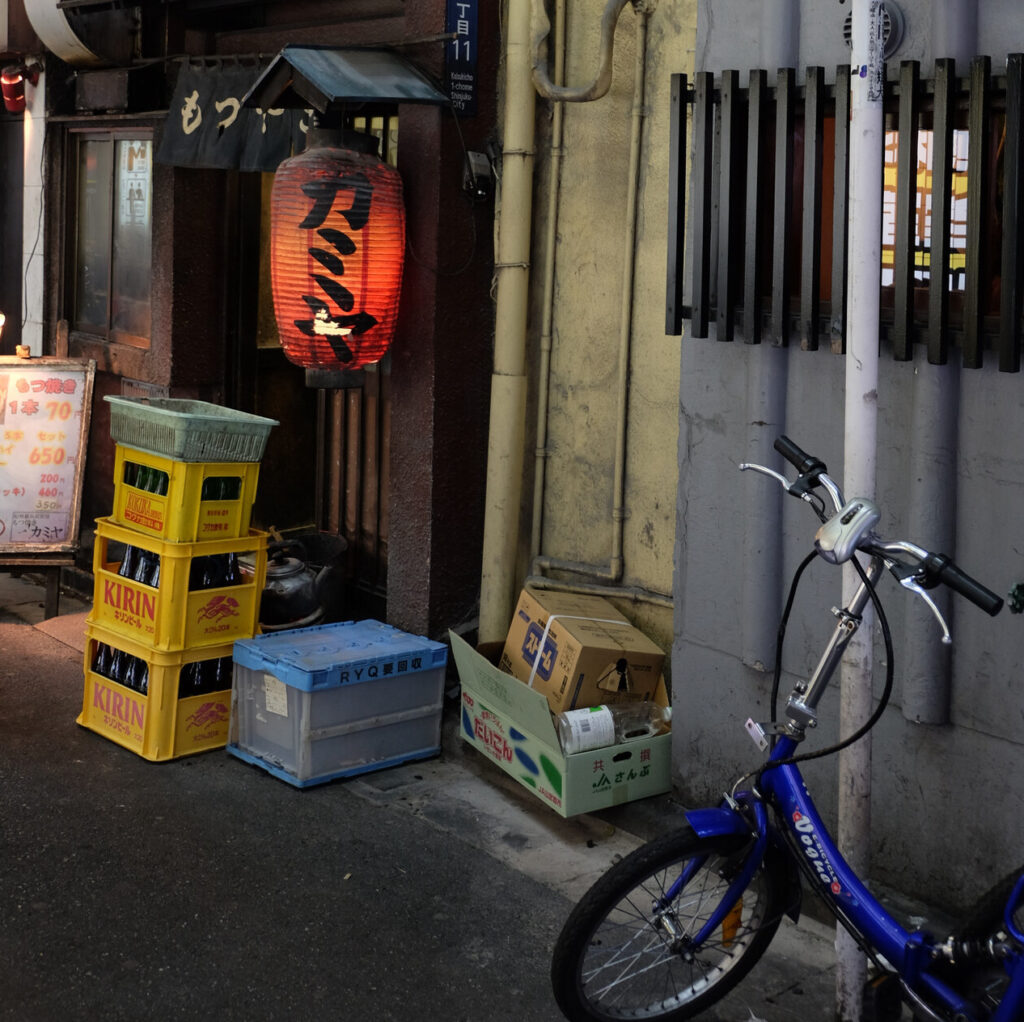
Go into Omoide Nukemichi
Discover Omoide Nukemichi, a hidden alley known as the Secret Passage of Memories, for an authentic experience away from popular spots like Golden Gai and Memory Lane.
This area, seemingly frozen in time since World War II, offers a gritty, intimate peek into Tokyo’s past with its tightly packed bars. Its untouched charm makes it an ideal spot for those seeking the road less traveled. However, navigating the alley might feel daunting without Japanese language skills, so I do recommend practicing a few basic phrases to begin with.
Check out my guide to Tokyo yokocho to learn more about them.
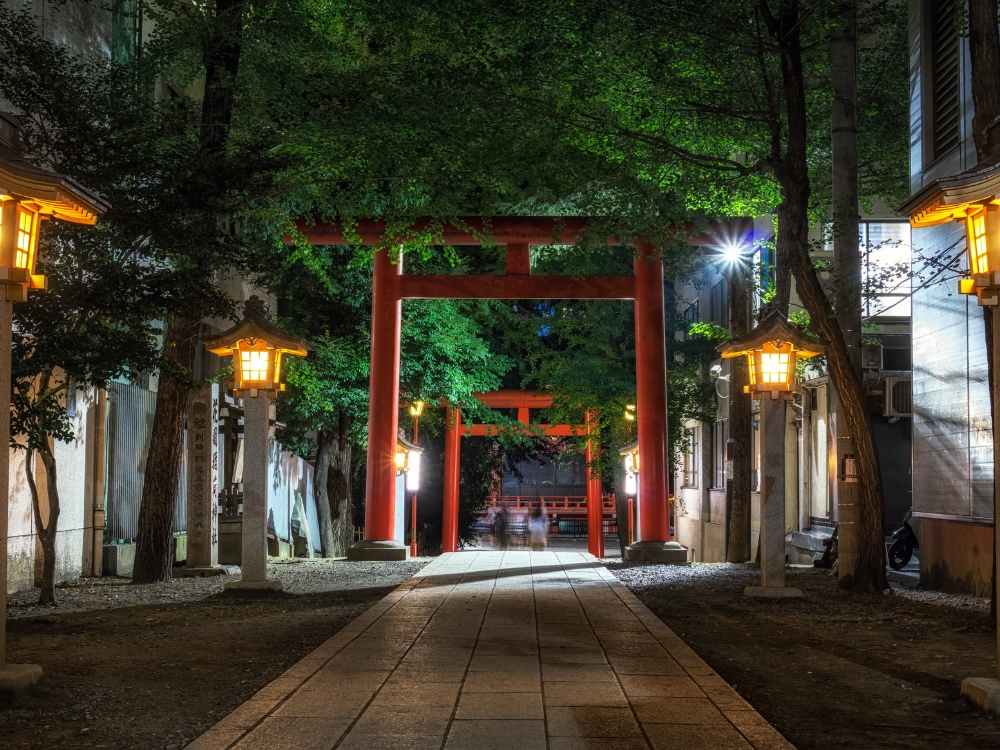
Pay your respects at Hanazono Jinja Shrine
Shinjuku is all about entertainment and neon lights, but did you know you can find your zen here away from the crowds too? For a peaceful setting for reflection and prayer, head to Hanazono Jinja Shrine, known for its beautiful torii gate and tranquil garden. The shrine hosts various festivals throughout the year, including the Tori no Ichi, adding to its cultural significance.

Hunt for food deals in depachika
Hunting for food deals in a depachika, the food halls located in the basements of Shinjuku’s large department stores, is like going on a treasure hunt. These places are packed with a wide variety of high-quality food, ranging from sushi and bento boxes to sweets and bakery items.
My favorite depachika are in Isetan Shinjuku Store, Takashimaya Times Square, Keio Department Store, Odakyu Department Store and Lumine 1 & Lumine 2.
Want to know a secret? Towards the end of the day, many stores offer discounts on perishable items, making it an ideal time to grab high-quality food at a lower price.

Admire the Shinjuku skyline from Shinjuku Southern Terrace
Located right in front of Shinjuku Station’s southern exit, the terrace is easily accessible and a great spot for photography, especially during the evening when the city lights come to life. It features sitting steps where you can chill with your travel companions and admire the coming trains pulling into Shinjuku station.
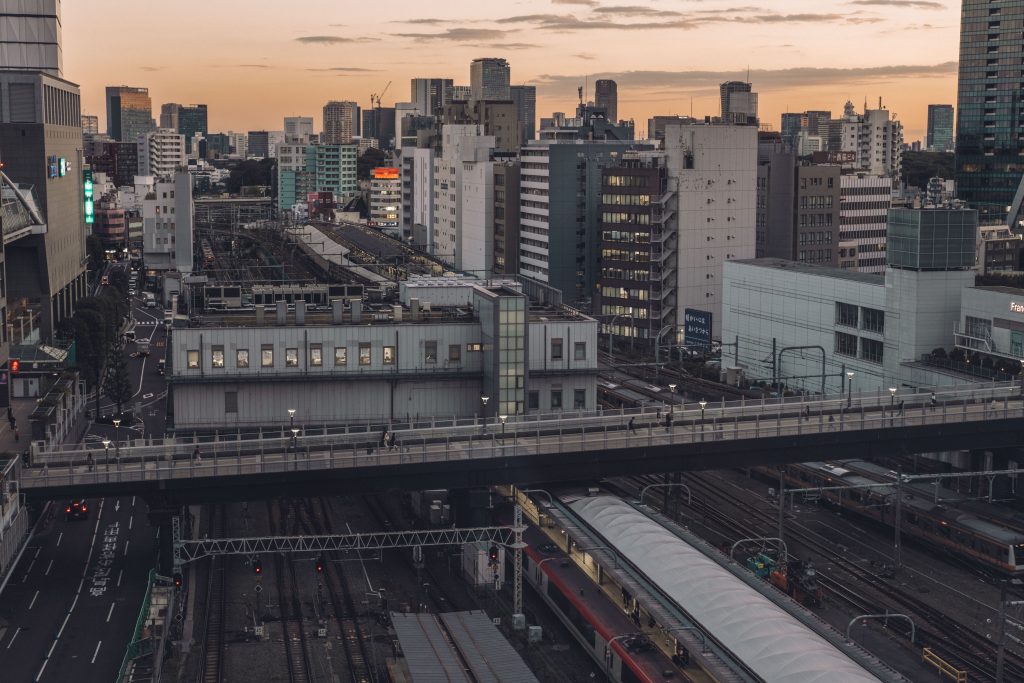
Experience the world’s busiest train station
Shinjuku Station in Tokyo is the busiest train station in the world, with over 3.5 million people using it every day. Shinjuku Station serves as a major connecting hub for several of Tokyo’s railway lines, including the JR lines, private railways, and subway lines.
The station has four main entrances – west, east, south, and new south – and about 200 exits, plus an underground shopping area. It’s a big, busy place that shows what life in Tokyo is like. Even though it’s crowded, it’s organized, so you can still find your way around, but you might want to use your phone’s maps for this one!

Hunt for bargains in Don Quijote discount store
Shopping at Don Quijote in Shinjuku is a blast, especially if you’re hunting for souvenirs, Halloween costumes, or unique finds. The Shinjuku branch is particularly impressive, spread over 5 floors and open 24/7, complete with a tax-free counter for international visitors.
It’s a must-visit for first-timers, offering everything from fridge magnets and Japanese masks to sweets like matcha and sakura Kit Kats, banana mochi, and dried squid snacks. Be ready for the store’s size; you might find yourself spending more time there than expected.
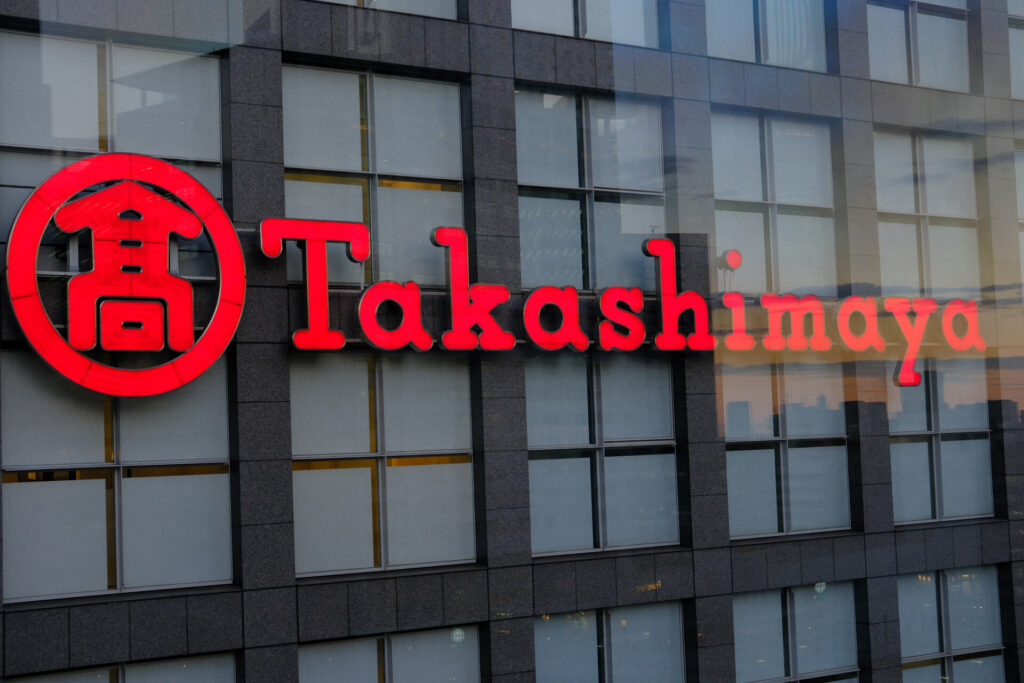
Go shopping in world-class department stores
In Shinjuku, you can easily dive into some world-class department store shopping and make your wallet cry. These stores offer everything from high fashion and luxury brands to unique Japanese goods and gourmet food halls.
Go to Isetan Shinjuku which is renowned for its quality and elegance. It features both international and Japanese designers and yes, it’s on the expensive side.
Takashimaya Times Square has a little bit of everything for everyone, from luxury brands to everyday items, plus a great selection of restaurants. The food floor is excellent for finding both Japanese and international delicacies and don’t miss the connected Tokyu Hands which is fantastic for souvenirs and unique finds.
Odakyu Department Store is located right next to Shinjuku Station. The top floors have restaurants with a view of the city.
Also next to Shinjuku Station, Keio has a remarkable food hall and a broad range of goods, including clothing, cosmetics, and souvenirs.
Lumine Shinjuku has three buildings, Lumine 1, Lumine 2 and Lumine Est. These shop cater mostly to a younger crowd with their selection of trendy fashion brands, accessories, and beauty products. Lumine Est is great for food, though, so make sure to visit levels 7 and 8.
NEWoMan Shinjuku is a must. This mall, near Shinjuku station’s south exit, offers a mix of high-end shopping, from fashion to home goods. It also provides stunning views of the area, ideal for photos.
Another shopping highlight is BICQLO, merging electronics from Bic Camera with UNIQLO’s affordable fashion.

Stay in Shinjuku capsule hotel
Consider a Japanese capsule hotel for a unique and affordable experience when staying in Shinjuku. Capsule hotels in Shinjuku are budget-friendly, dependable, and exceptionally clean. They’re great for travelers looking to save money and experience a different aspect of Japanese culture.
Offering private sleeping capsules and shared bathrooms, they’re a step-up in privacy from hostels. This option is perfect for those open to trying new things and okay with less space and privacy.
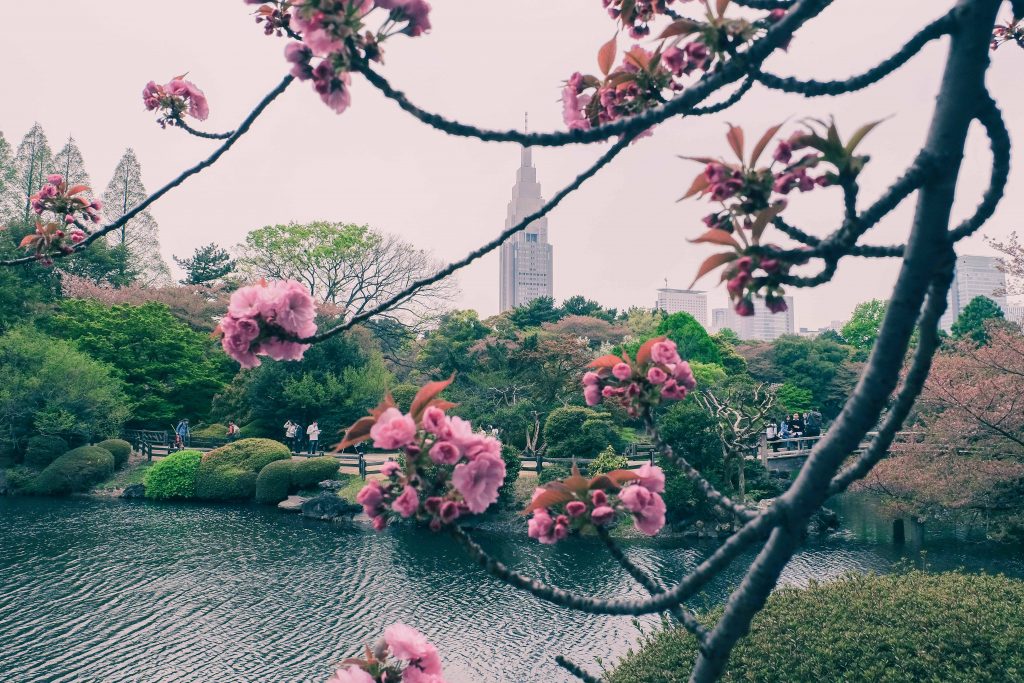
See unique architecture
If you’re looking for architectural marvels, then Shinjuku is your place. I made a list with some of the most beautiful buildings you can see here.
Yasuyo Building – This is by far one of my favorite buildings in the whole of Shinjuku and I know that architecture lovers are going to love this one too. This is a commercial building located next to the eastern entrance of Shinjuku station. It’s especially cool because it resembles a stack of twisted bolts.
Reaction of Mineral – Atelier Tekuto is an incredible building that looks out of this world. It is a small 44m2 corner plot that looks abstract but so great. From certain angles, it looks like a piece of diamond. The building is a residential house with a kitchen and bathroom. There is even space for a car underneath.
Shinjuku Rurikoin Byakurengedo – A Buddhist temple like no other, this looks like a squared spaceship in the heart of Shinjuku. The temple was completed in 2014 and received a Good Design Award in 2015.
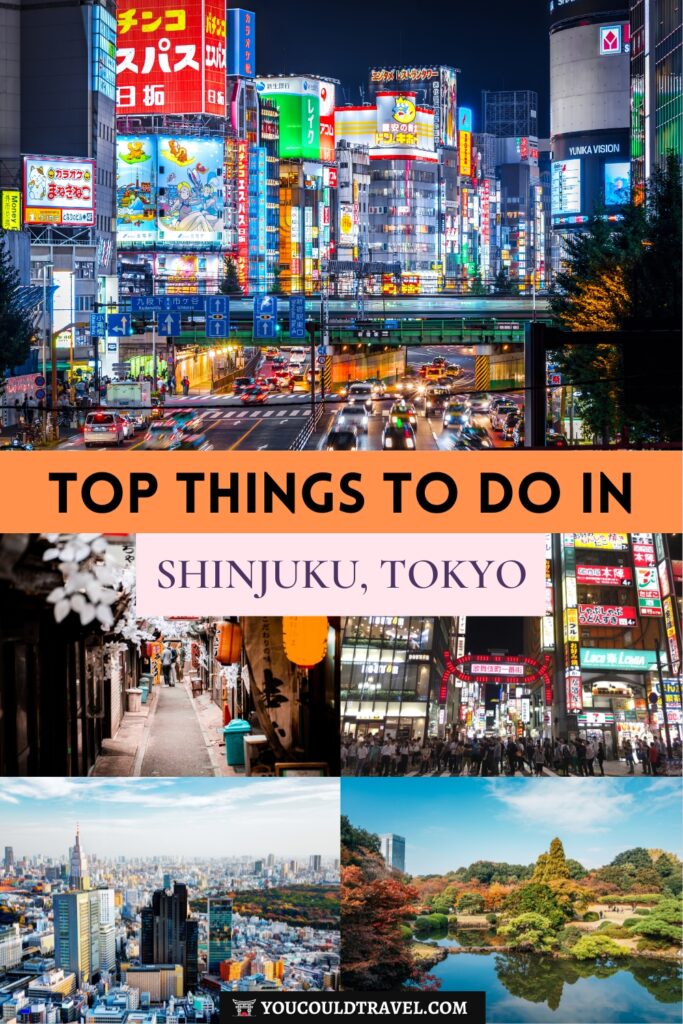
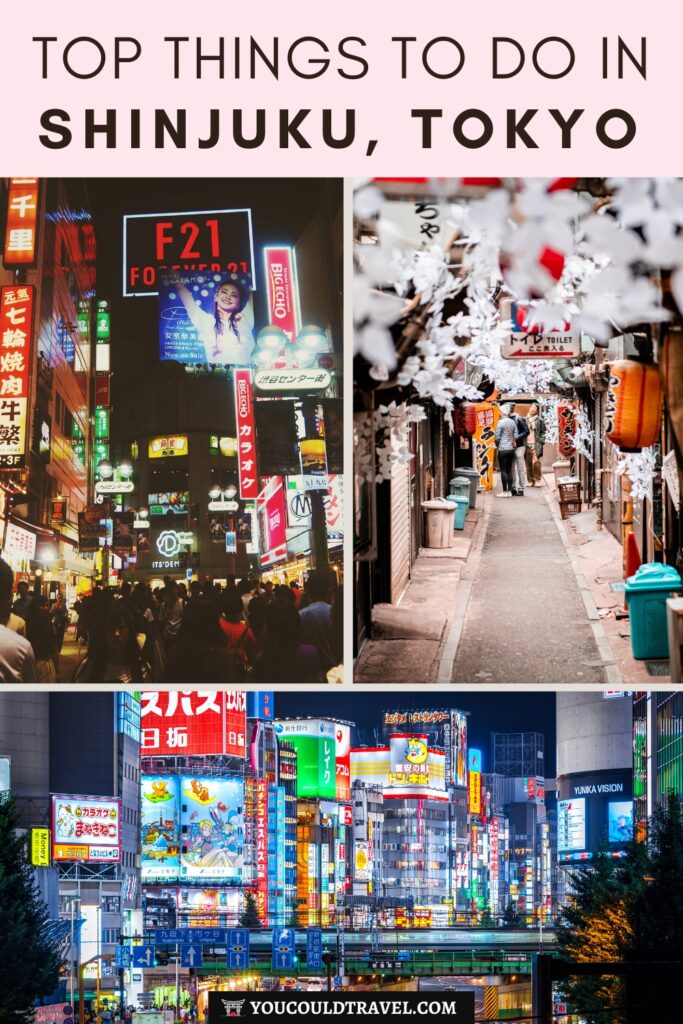
More travel tips for Tokyo
Shinjuku is just one of the many neighborhoods in Tokyo and yes, it’s one of the most popular places to visit. For a complete and fun trip, make sure to check out my Tokyo guide which helps first time visitors find the perfect Tokyo itinerary, what to do in the city and even what food to try.
Don’t forget to check the guide to first time in Japan which covers the cost of your trip, the best time to visit, what to pack and what to wear in Japan as well as a complete guide on how to plan your trip.

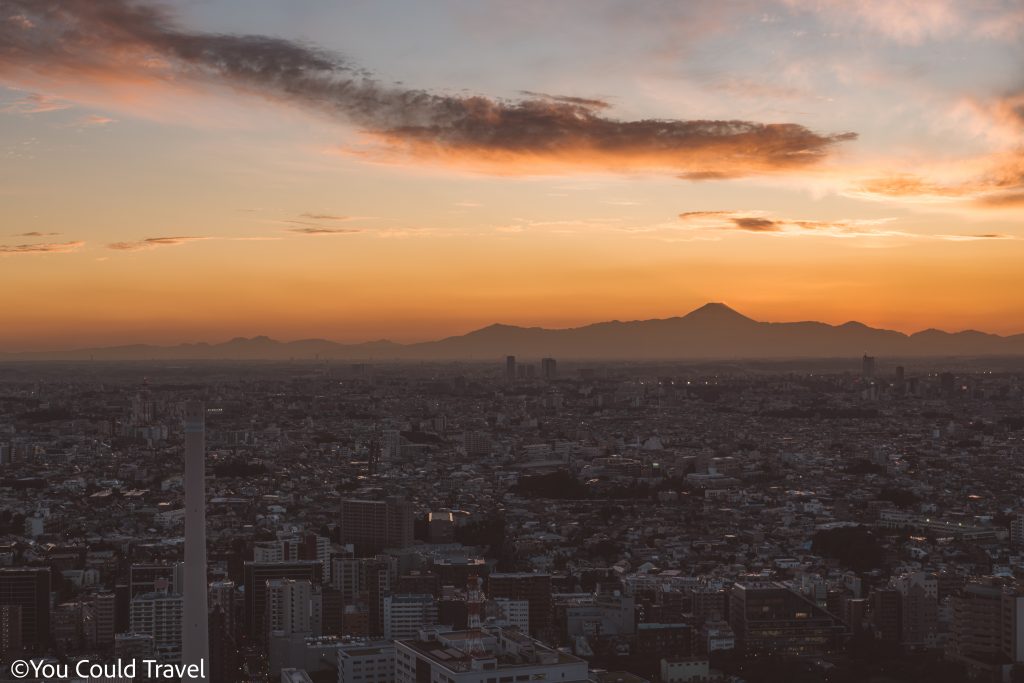
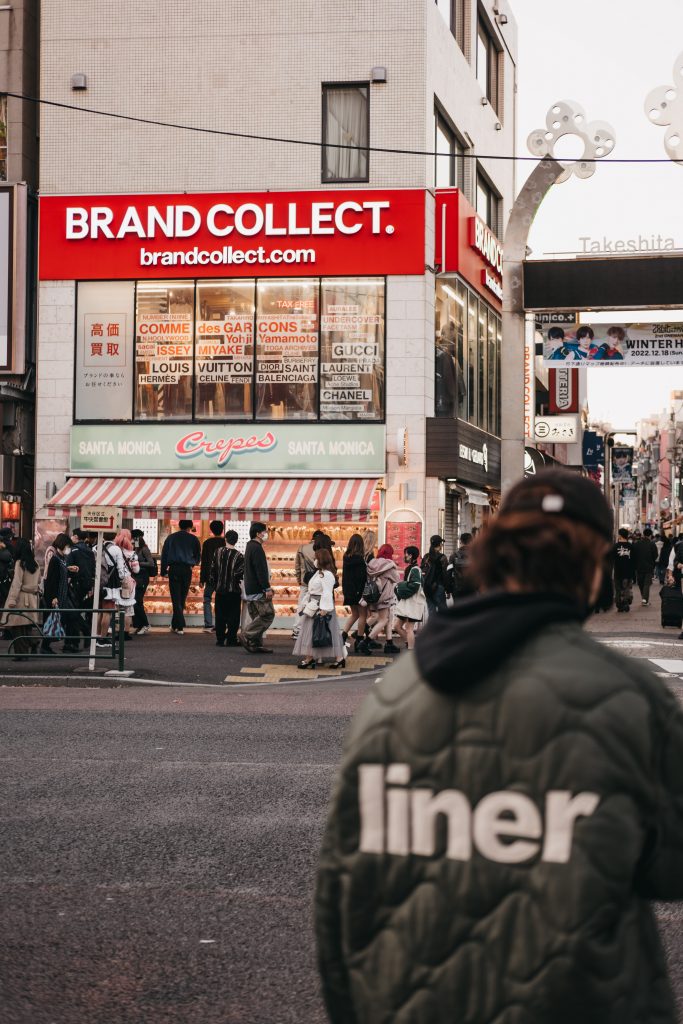

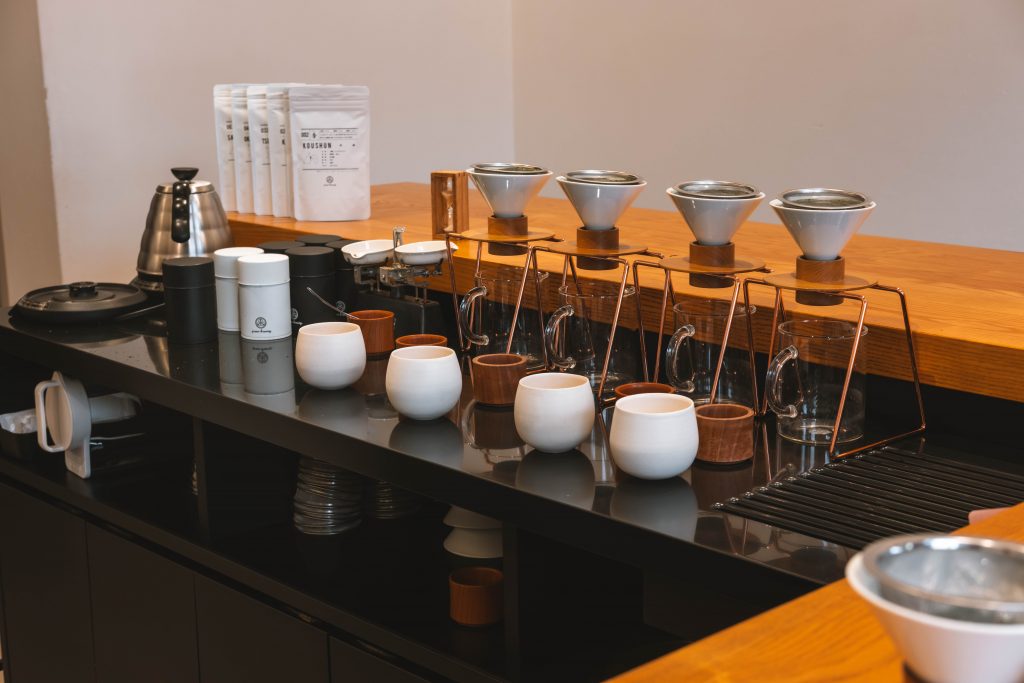

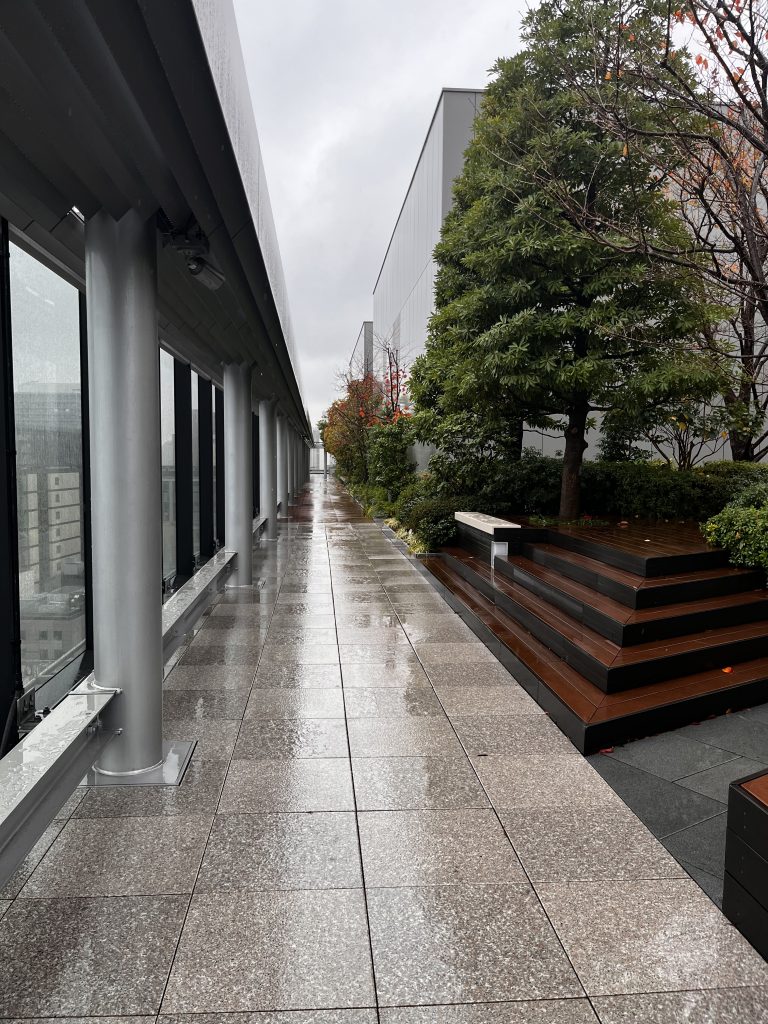


Leave a Reply